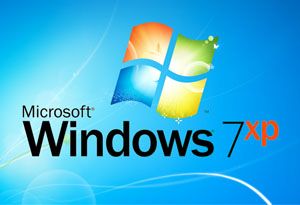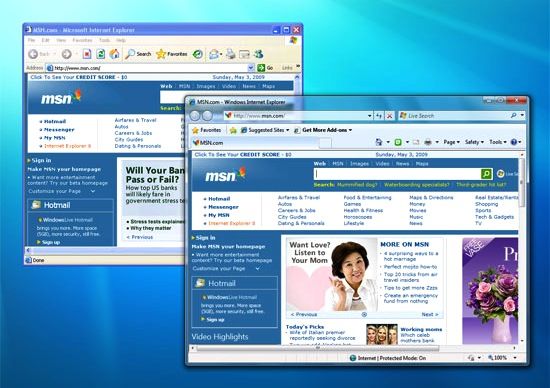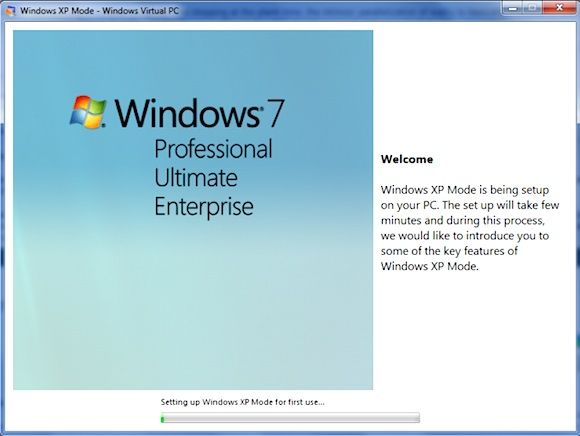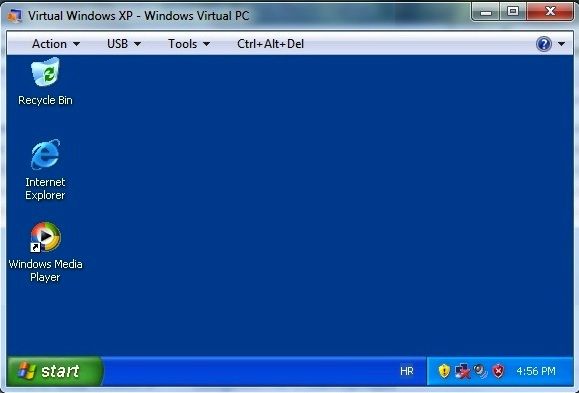As far as backwards compatibility goes, Windows 7's own compatibility mode doesn't work wonders. It plays dress up, with a fake nose and beard, and bridges some of the most common software issues.
Generally, that is enough. All but a few troublemakers are whining about an operating system they simply don't recognize and are otherwise quickly updated to keep track of the OS revolution. If they don't, people will find alternatives, and the application's userbase will soon be as dead as the development branch.
There are two big exceptions to this rule; bespoke line-of-business applications and rather old, incompatible hardware. These are applications wildly favored by the (bigger) corporate world, handcrafted for an essential step in the workings of the business, probably more than a decade ago. They've become irreplaceable, haven't been maintained in ages, and are the reason your company still wants you to use Windows XP and Internet Explorer 6 (oh, the horror).
Windows XP Mode
With Windows 7, Microsoft has abandoned the hope of maintaining direct compatibility for these applications, as they should. This allows them to advance their operating systems, and close security leaks, without being restricted by line-of-business applications that were haphazardly custom tailored in a time gone by. Instead, they offer Windows 7 XP Mode.
Windows XP Mode comes the closest to an OS virtualization, albeit without OpenGL and other 3D components. It takes care of those other stubborn XP (or IE6) application problems that can't be solved with the 'regular' compatibility mode. But most of all, it frees volume-licensing companies from the XP-restriction and drives a flock of new customers to Microsoft's new operating systems.
Since Windows 7 XP Mode is mainly focused on corporate use, it isn't offered readily to users of all distributions. Only Windows 7 Professional, Corporate and Ultimate are eligible for the free download, including Windows XP Mode (a pre-activated Windows XP SP3 Professional image) and Windows Virtual PC (the virtualization machine).
However, all Windows 7 distributions can download the Windows Virtual PC application. This just means you'll have to cough up your own copy of Windows XP SP3 Professional. To download, select a different distribution (e.g. Professional) from the dropdown menu.
Installation isn't too complicated, just read all dialogs and follow the instructions on the screen. Windows XP Mode will install independently for each user, and share many of your hardware components, like hard drive, disk drive, USB sockets, and it'll even redirect your My Documents for optimal integration.
Using XP Mode - Within & Without Windows
Starting up, Windows 7 XP Mode mostly feels like a regular virtual machine. That is, not terribly fast, because the entire operating system must be (virtually) booted. Once past that, the interaction is pretty fast and well-integrated. Windows XP applications appear in Windows 7's start menu and task bar. The only thing not integrated all that well is the installation, but more on that below.
There are two major display modes available; windowed and integrated. The windowed mode is what you see when you first launch the application, a desktop in a windows. This is also how applications are to be installed. Luckily, that's not what everyday usage looks like. Much like Parallel's Coherence, or VirtualBox's Seamless mode, Windows XP windows will blend in with your Windows 7 desktop.
The biggest issue is the aforementioned installing of new applications. Windows XP Mode can only run in one display mode at a time. Since applications need to be installed in windowed mode, this means that all running applications must first be closed. It's not even possible to right-click an installer on your Windows 7 desktop and choose to install it in Windows XP Mode.
Aside from that, using Windows 7 XP Mode has been an interesting experience. It integrates well, and completely takes care of those stubborn XP applications. You also shouldn't forget that you're getting a free Windows XP SP3 Pro installation with Windows 7 Professional, Corporate and Ultimate.
What do you think? Let us know in the comments section below!




